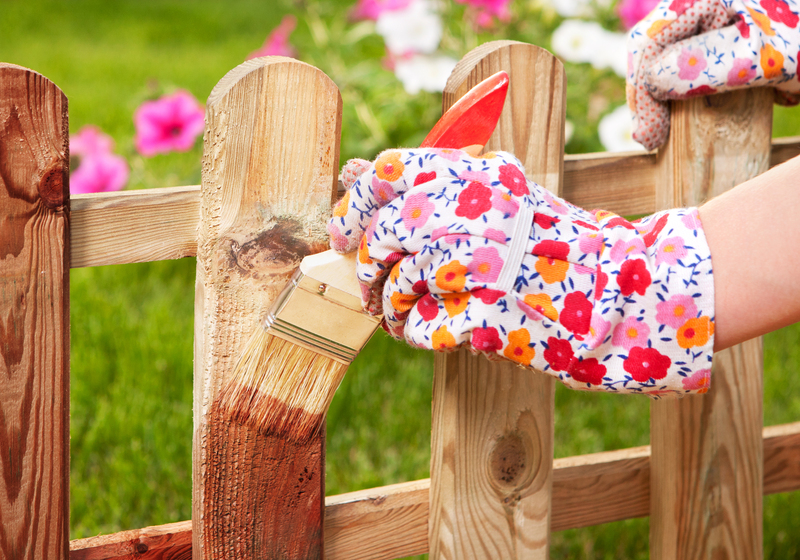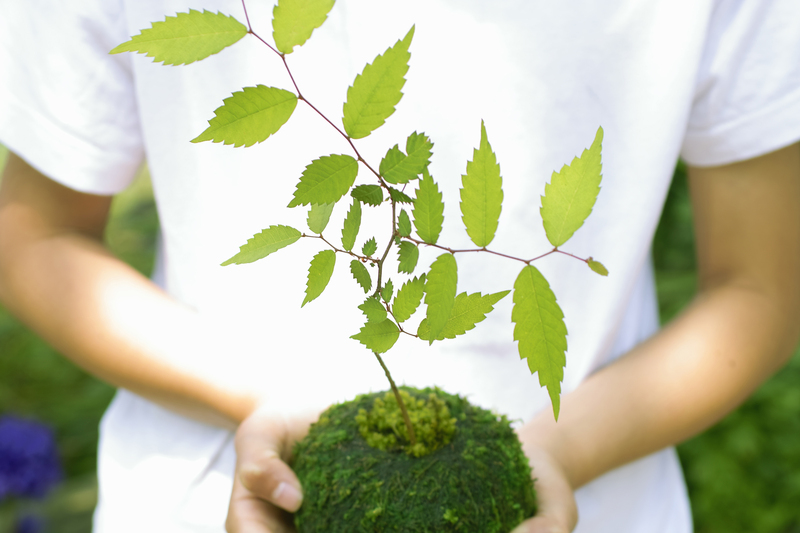The Essential Orchid Care Handbook
Posted on 18/05/2025
The Essential Orchid Care Handbook
Orchids are among the most cherished and intriguing houseplants for enthusiasts and beginners alike. With their elegant blooms, remarkable variety, and a reputation for being finicky, orchids captivate everyone's attention. However, learning how to care for orchids isn't as intimidating as you may think. Welcome to The Essential Orchid Care Handbook--your comprehensive and google-friendly guide to growing thriving, beautiful orchids for years to come.
Understanding Orchids: An Introduction
The orchid family, Orchidaceae, is one of the largest and most diverse families of flowering plants, showcasing over 25,000 documented species and more than 100,000 hybrids. From the striking Phalaenopsis (moth orchids) to the mesmerizing Cattleya, these plants feature in homes and botanical collections worldwide.
- Phalaenopsis (moth orchid): Most popular and beginner-friendly.
- Dendrobium: Known for their tall canes and striking flowers.
- Cattleya: Famous for ruffled petals and fragrance.
- Oncidium: Recognizable for their "dancing lady" flowers.
- Vanda: Loved for intense colors and aerial roots.
With so many varieties to choose from, understanding the essential elements of orchid care is key to success. In this handbook, you'll find step-by-step instructions and tips on every aspect of orchid maintenance.

Choosing the Right Orchid for Your Home
Selecting the best orchid species and variety for your lifestyle and environment is the first step toward a blooming friendship. Consider the following before purchasing your orchid:
- Light Requirements - Does your home provide bright, indirect light? Or do you have strong sunlight?
- Humidity Levels - Are you willing to adjust humidity, or do you prefer low-maintenance varieties?
- Blooming Schedule - Do you want orchids that bloom frequently or seasonally?
- Care Level - Are you a beginner seeking easy care, or ready to take on challenging species?
For beginners, Phalaenopsis orchids are ideal as they adapt well to typical home conditions and flower for months with the right care.
Popular Beginner Orchids
- Phalaenopsis - Tolerant and easy to feed.
- Dendrobium - Adaptable and forgiving.
- Oncidium - Happy with indirect light and regular watering.
The Perfect Spot: Light and Location
Proper lighting is crucial for healthy orchid growth. Orchids generally prefer bright, indirect light to mimic their native habitats under tree canopies.
How Much Light Do Orchids Need?
- Phalaenopsis: Medium to low indirect light.
- Cattleya: Bright, filtered sun.
- Dendrobium: Strong indirect sunlight.
Tip: If your orchid leaves are dark green, increase the light; if they're yellowish-green or red, reduce sun exposure.
Best Places to Position Orchids Indoors
- East-facing windowsills: Ideal for gentle morning sunlight.
- Shaded south or west windows: Provide bright, filtered light without harsh afternoon rays.
- Using sheer curtains: Diffuses sunlight to protect leaves from scorching.
Optimal Watering Techniques for Orchids
A common myth is that orchids need little water. In truth, proper watering is one of the most vital skills in orchid care. Over-watering is the number one killer of orchids!
Orchid Watering Tips
- Only water when the potting mix is nearly dry--typically once every 7-10 days for most household conditions.
- Use tepid water to avoid root shock.
- Water early in the day to enable leaf surfaces to dry, preventing disease.
- Never let orchids sit in standing water; empty saucers after watering.
- Use rainwater or distilled water for sensitive species.
Test the moisture by inserting your finger into the pot--if the top inch feels dry, it's time to water.
Orchid Potting Mix and Repotting Guidelines
Orchids require special potting media to ensure their unique roots get enough moisture and air flow. Common choices include:
- Bark chips: Offers great drainage and airflow, mimicking tree branches in the wild.
- Sphagnum moss: Retains moisture; best for beginners or areas with low humidity.
- Charcoal and perlite: Added to improve drainage and prevent odors.
When to Repot Orchids
Plan to repot every 1-2 years or when:
- The potting mix breaks down and becomes compacted.
- Roots begin to overflow the pot or rot appears.
- Your orchid has finished blooming.
Step-by-Step Orchid Repotting:
- Gently remove the orchid from its pot and shake off old media.
- Trim dead or mushy roots with sterilized scissors.
- Place into a new or sterilized pot with fresh orchid mix.
- Support the roots evenly--avoid packing the medium too tightly.
- Water lightly and keep out of direct sunlight for a week.
Humidity and Air Circulation for Thriving Orchids
Most orchids prefer a humidity range between 40%-70%. If the air is too dry, leaf tips may brown and buds may drop prematurely.
How to Increase Humidity
- Use a humidity tray: Place pebbles and water in a shallow tray beneath the pot.
- Group plants together: This creates a microclimate of elevated humidity.
- Mist leaves regularly: Especially important during winter heating.
- Utilize a room humidifier: Reliable for consistent conditions.
Ensuring Good Air Circulation
- Place orchids where there's gentle, indirect airflow (open windows, fans on low).
- Avoid stagnant conditions--prevents fungal and bacterial disease.
Feeding and Fertilizing Your Orchids
Regular but moderate fertilization is crucial for healthy growth and abundant blooms.
How Often to Feed Orchids
- Use a balanced, water-soluble orchid fertilizer (20-20-20 or similar).
- Apply at half-strength every 2-4 weeks.
- Flush the pot with plain water monthly to prevent salt build-up.
Tip: "Feed weakly, weekly" is the orchid grower's mantra!
Dealing with Common Orchid Problems and Pests
Observant growers can spot and stop most problems early. Watch for:
- Yellow leaves: Usually a sign of overwatering, poor drainage, or lack of light.
- Wrinkled pseudobulbs: Indicates dehydration or root problems.
- Sticky residue or white fluff: Could be mealybugs or scale insects.
- Black or brown spots: Fungal/bacterial disease; remove affected parts and increase airflow.
Pest Control the Orchid-Safe Way
- Wipe leaves with a mild soapy solution and rinse.
- Inspect for bugs regularly and isolate new plants.
- Use sterilized scissors for pruning.
- For stubborn infestations, use a neem oil spray or insecticidal soap.
Encouraging Orchid Re-Bloom: Expert Tips
An orchid's stunning flowers are the reward for proper care. After blooms fade, follow these expert tips to encourage future flowering:
- Phalaenopsis: Cut the flower spike above a node once blooms drop, to encourage a secondary spike.
- Seasonal rest: Some species need a brief period of cooler night temperatures and less watering to trigger new blooms.
- Consistent feeding: Provide nutrients year-round to replenish reserves for the next bloom.
- Proper light: Provide ample bright, filtered light as most orchids will not flower in the shadows.
Top 10 Orchid Care Mistakes to Avoid
- Overwatering and root rot
- Direct sunlight scorching leaves
- Ignoring repotting needs
- Using standard potting soil
- Letting roots dry out entirely
- Forgetting to fertilize
- Low humidity environments
- Neglecting pest inspections
- Drafty windowsills or near heaters/air conditioners
- Not researching the specific needs of your orchid type

Frequently Asked Orchid Care Questions
How often should I water my orchid?
Usually once every 7-10 days; always let the media dry first.
My orchid's leaves are wrinkling, what's wrong?
Most likely underwatering or root failure; check roots and increase humidity.
Do orchids need special fertilizer?
Yes, use balanced orchid food at half-strength, not general houseplant fertilizer.
What's the best pot for my orchid?
Use clear plastic or terracotta pots with multiple drainage holes.
Conclusion: Mastering Orchid Care
Caring for orchids is an enjoyable and rewarding endeavor. By following the essential guidelines in this comprehensive orchid care handbook, you'll help your orchids flourish and bloom year after year. Remember to tailor care to your particular orchid type and adjust conditions as seasons change. With patience and attention, even beginners can become successful orchid growers.
Whether you're looking to master the art of

